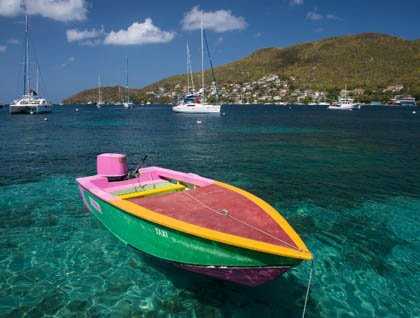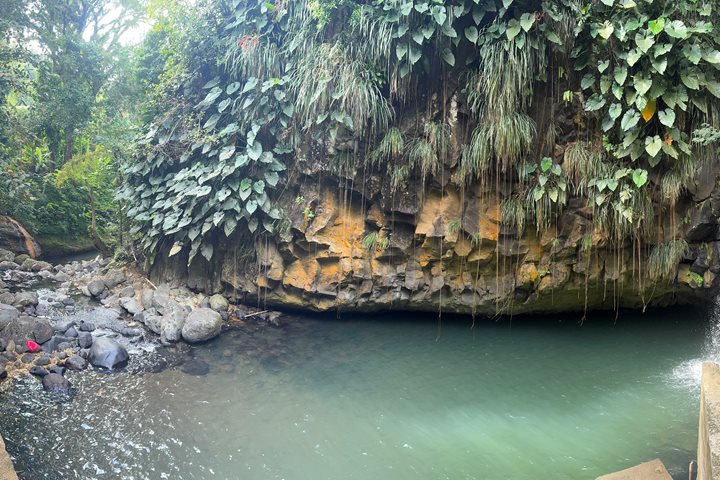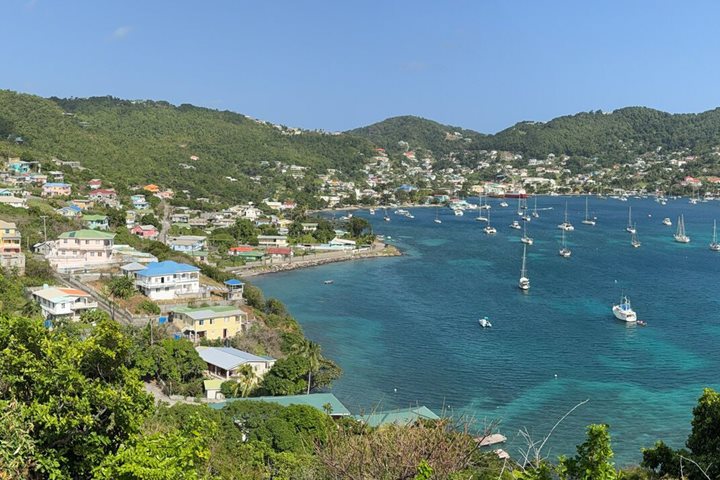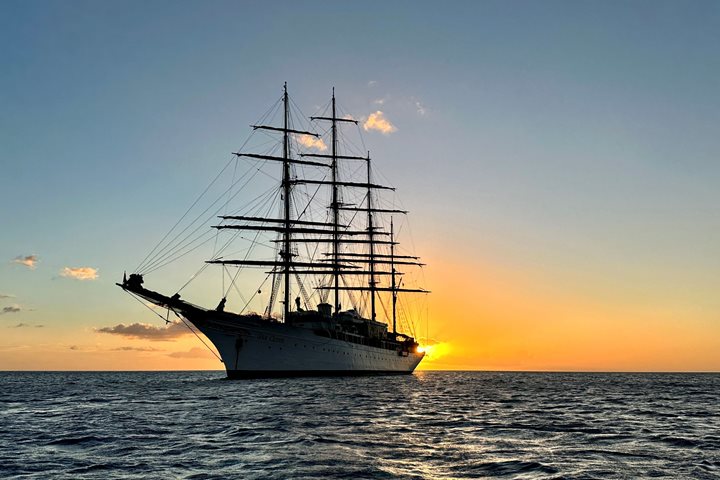We arrived in the tranquil bay off Port Elizabeth, the main city on the tiny island of Bequia and dropped our anchor at 7:15 a.m. The morning sun was behind some clouds, but shortly on our arrival the sun shone. Bequia is a tiny island only a few square miles in size but possessed of enormous cultural diversity. The early Europeans who came here included a number of indentured French and Scotts who worked on the early sugar plantations. The names of the early settlers still predominate amongst the islands 6,000 permanent inhabitants. When they came here there was still a small relic population of Caribe Indians on the island.
Bequia is the ancestral home of the “Garafuna,” or sometimes called “Black Caribe.” “Garafuna” may be a dialect expression of “Caribe-fumé” with “fume” suggesting the darkening of the skin when the races mixed. The Black Caribs revolted against the English overlords in 1795. At one point in 1795 the “Garafuna” controlled the entire island of St. Vincent for almost six months. The English executed one of the great Caribe chiefs, Joseph and approximately 5,000 “Garafuna” were rounded up and sent to the small uninhabited island Bara sloe, just off the southeast coast of Bequia. They remained there until 1798 when the survivors were resettled in Honduras and Belize. Their descendants make a pilgrimage to Becquia in memory of their ancestors.
We boarded our Zodiacs and landed on the pier at 8:45 where we got into the small pickups with benches for our tour of the island. We drove first to the north side of the island to an early defensive battery named Fort Hamilton, where there is battery today of five canons (four English and one French). The fort has an association with Alexander Hamilton, the first treasurer of the United States and a native of St. Kitts. At the battery, our lovely lady guides told us local Bequian folk stories and sang songs about whaling. The view from Ft. Hamilton across to Princess Margaret Bay was beautiful. The people of Bequia are allowed to take four whales a year and the season begins in February. They hunt the whales in the traditional manner in open skiffs powered only by sail and with hand thrown harpoons. The nature of the hunting was considered subsistence and since it was not mechanized and practiced for centuries they have been allowed to continue it. Some years they get no whales.
Our next stop was to the turtle sanctuary of Brother Orton King, a former commercial turtle fisherman who some years ago came to the realization that the turtles, fish, and reefs, which he knew as a child, were being destroyed by overfishing and other exploitative industries. Brother King vowed to help serve the turtles and so began to raise recently hatched hawksbill and green turtles in pools. To date he has released 975 turtles and this year he expects to see in the next five years some of his turtles return to lay their eggs here. We left the turtle sanctuary and were dropped off on the main street, which was ringed with tables selling local handicrafts.
Back at the harbor some boarded Zodiacs and others walked the short distance to “Jack’s Bar,” a welcoming restaurant bar right on the sea. There we had fruit, rum punches, and cold beers, compliments of Lindblad-National Geographic. Most went swimming in the crystalline clear water and a few said the snorkeling was excellent.
Tom Heffernan gave a rousing talk on the history and development of the Rastafarian religion as it emerged in Jamaica in the late 1920s and early 30s. Tea and yummy cakes were served on the portside after Tom’s talk and engine tours began immediately after that.
Dinner was served under the stars on the lido deck, and after dinner we watched the gripping film Around Cape Horn, narrated and photographed by Captain Irwin Johnson. Johnson made this voyage as a 19-year-old in 1929, and he photographed one of the last great commercial sailing vessels transporting grain to western South America and returning with guano. The film depicts one of the most incredible storms I have ever seen a sailboat endure. And as the finale of the evening, our redoubtable crew performed traditional sea shanties dresses in traditional sailor suits.
Off to bed after a rich day.









